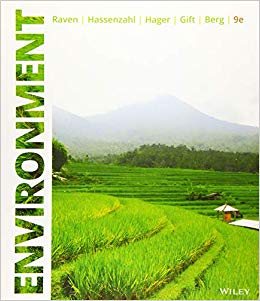1. Consider an open economy in which the aggregate supply curve slopes upward in the short run. Firms in this nation do not import raw
1. Consider an open economy in which the aggregate supply curve slopes upward in the short run. Firms in this nation do not import raw materials or any other productive inputs from abroad, but foreign residents purchase many of the nation’s goods and services. What is the most likely short-run effect on this nation’s economy if there is a significant downturn in economic activity in other nations around the world?
2. Consider a country with an economic structure consistent with the assumptions of the classical model. Suppose that businesses in this nation suddenly anticipate higher future profitability from investments they undertake today. Explain whether or how this could affect the following:
a. The current equilibrium interest rate
b. Current equilibrium real GDP
c. Current equilibrium employment
d. Current equilibrium saving
e. Future equilibrium real GDP
3. Bureau of Labor Statistics: Economy at a Glance
Use the link at BLS Pay to visit the Bureau of Labor Statistics (BLS) Web site.
Perform the indicated operations, and answer the following questions.
a. In the “Pay and Benefits” popup menu, click on Employment Costs. Choose Employment Cost Trends. What are the recent trends in wages and salaries and in benefits? In the long run, how should these trends be related to movements in the overall price level?
b. Back up to the home page, and in the “Productivity” popup menu, click on Labor Productivity and then on PDF next to “LPC News Releases: Productivity and Costs.” How has labor productivity behaved recently? What does this imply for the long-run aggregate supply curve?
c. Back up to the home page, and now in the “Employment” popup menu, click on National Employment and then on PDF next to “National Employment (from the Current Employment Statistics survey”. Does it appear that the U.S. economy is currently in a long-run growth equilibrium?
Consider the following: aggregate demand and long-run aggregate supply. Search the Internet for data on factors that influence the assigned curve for each. For which factors do data appear to be most readily available? For which factors are data sparser or more subject to measurement problems?
4. Some economists have begun factoring into their long-run aggregate supply evaluations the underutilized and untapped resource endowments near and within the Arctic Circle. Bringing those resources into broader use, these economists suggest, could do much to generate speedier rightward shifts of the long-run aggregate supply curves of the United States and other northern nations.
Lands with Unexploited Resource Endowments
The Arctic, the global region north of 66.33 degrees latitude, contains only slightly more than 4 percent of the earth’s surface area. Nevertheless, nearby regions stretching southward to 45 degrees latitude encompass another 11 percent of the earth’s surface and an additional 25 percent of its land mass. Wide swaths of these lands contain significant endowments of as-yet unexploited resources, including minerals, oil, and natural gas.
Three key explanations can be offered for the meager utilization of Arctic and near-Arctic resources. First, the region is not particularly hospitable to people, who must adapt to long summer days and winter nights and to lengthy periods of extreme cold. Second, large tracts of land are covered with thick permafrost and with heavy sheets of ice, or glaciers. Third, much of the land near and within the Arctic is publicly owned. Governments have fewer incentives than private individuals and businesses to extract productive resources from these lands. Indeed, failure to place Arctic and near-Arctic resources in private hands has done more to consign them to an economic deep freeze than the cold air above them.
Could unfreezing Arctic endowments heat up aggregate supply growth?
The volume of untapped Arctic oil is thought to be sufficiently large to provide the entire world’s requirements for about half a year, and today’s technology could fuel global natural gas requirements for an estimated 2 years. If all estimated Arctic oil could be extracted, it would last the world at least 3 years, and all of the region’s likely natural gas reserves would be enough for about 25 years. Mineral endowments are less certain, but most geologists suspect that unexploited Arctic and near-Arctic lands contain vast amounts of metal ores.
Of course, making most Arctic resources accessible to private producers would gradually add to annual flows of resources that residents of northern nations such as the United States could use to produce goods and services. Estimates indicate that drawing on these endowments would boost annual U.S. real GDP growth by an appreciable fraction of a percentage point. Thus, reducing government ownership of these underutilized and untapped endowments would contribute to higher economic growth.
a. Why do you suppose that firms in Arctic nations are already developing specialized tanker ships and platforms for use in privately accessible Arctic areas?
b. What are possible opportunity costs of opening Arctic lands to private extraction of as-yet unavailable resource endowments?
Resources
For reports of current data about likely Arctic oil and natural gas endowments, go to Arctic Survey .
To learn about economic issues and Russia's plan for extracting metal ores in the Arctic, go to Arctic Russia .
Step by Step Solution
3.47 Rating (150 Votes )
There are 3 Steps involved in it
Step: 1
1 Consider an open economy in which the aggregate supply curve slopes upward in the short run F irms in this nation do not import raw materials or any other productive inputs from abroad but foreign r...
See step-by-step solutions with expert insights and AI powered tools for academic success
Step: 2

Step: 3

Ace Your Homework with AI
Get the answers you need in no time with our AI-driven, step-by-step assistance
Get Started


